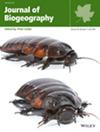Anticipating Shifts in American Beech Distribution in a Changing Climate
Abstract
Aim
This study aimed to anticipate shifts in habitat suitability for American beech (Fagus grandifolia) under current and future climate scenarios using an ensemble of species distribution models (SDM). The resulting habitat suitability projections will serve as a foundational layer for developing a hierarchical risk mapping model for beech leaf disease, an emerging epidemic in the eastern United States, which will be published in a subsequent paper.
Location
The study area spans the eastern United States—primarily east of the Mississippi River (Northeast, Midwest and Southeast)—and includes adjacent ecoregions of Canada where American beech occurs.
Taxon
The taxon of interest is American beech (Fagus grandifolia Ehrh.), a keystone mesic species in eastern American forests.
Methods
We employed an ensemble species distribution modelling approach, combining generalised linear models, multivariate adaptive regression splines, generalised boosted models, random forest, and maximum entropy for R. Present-day habitat suitability was modelled by bias-corrected SDMs with target group background and spatial thinning via semi-variogram measures, using a 1 km resolution dataset that included climatic, edaphic, and topographic variables. For projections under future scenarios, we utilised four shared socioeconomic pathways (SSPs), adopted from the AdaptWest database and modelled by employing ensemble means from eight Coupled Model Intercomparison Project Phase 6 Atmosphere–Ocean General Circulation Models.
Results
Ensemble projections consistently show a decline in suitable habitat for Fagus grandifolia across all future climate scenarios, with losses outweighing gains. Winter precipitation emerged as the most influential variable (38.7%), followed by summer precipitation (15.2%), terrain ruggedness (11.4%), and extreme maximum temperatures (10.1%). Soil properties contributed moderately, with clay content, heat-moisture index, pH and organic carbon accounting for the remainder.
Main Conclusions
American beech is projected to experience significant habitat contraction due to climate-induced water stress and limited dispersal capacity. Conservation strategies should focus on protecting northern refugia, exploring assisted migration, and integrating climate suitability with emerging disease risks to enhance long-term resilience.


 求助内容:
求助内容: 应助结果提醒方式:
应助结果提醒方式:


